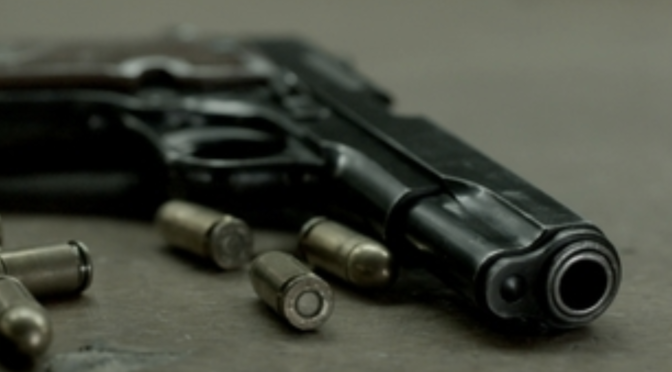 Focusing the aftermath of General Franco’s reign onto the plight of one family seeking justice, Jorge Laplace’s 23 SHOTS (23 DISPAROS) is a curious yet frustrating endeavour. While depicting the political violence and division between state and civilians in meticulous detail, the film’s central mystery lacks the focus to make it compelling drama.
Focusing the aftermath of General Franco’s reign onto the plight of one family seeking justice, Jorge Laplace’s 23 SHOTS (23 DISPAROS) is a curious yet frustrating endeavour. While depicting the political violence and division between state and civilians in meticulous detail, the film’s central mystery lacks the focus to make it compelling drama.
On December 4th 1977, teenager Manuel Jose Garcia Caparros was killed by a gunshot, caught up in the chaos surrounding a protest for Andalusian autonomy. Long suspecting the perpetrator was a police officer, Caparros’ sisters demand an answer that will enable them to put the past to rest. Incorporating interviews from the family, former police officers and witnesses, the film goes to great lengths to describe the demonstration and resultant chaos which led to the fatal gunshot. The viewer is given a walk-through of the Council Offices where the demonstration took place, before entering the streets where civilians scattered to avoid arrest. The constant movement between locations is a nice touch, offering a dynamic approach instead of interviews conducted in front of a stationary camera. It is a comprehensive account, stretching to the operating room where Caparros’ body was examined. Evidence of the bullet entry wound and a witnesses’ disturbing account of the police’s attempt to pin the blame on protestors make for an interesting case, but the film’s leisurely pace hinders a sense of urgency.
The description of the event surprisingly amounts to half the runtime and certain stylistic choices also detract from the film’s serious subject matter. Slow-motion shots, an ominous score and opening sequence at a gun range only serve to glorify the mystery. Grey tones dim the natural light, creating a fake aesthetic where more simplistic camerawork would have better served the task at hand.
The sisters’ fight to uncover the identity of their brother’s killer comes secondary to specifics of the demonstration and ex-policeman Juan Antonio O’Donnell’s investigation. It is of course easy to sympathise with the family but their presence is – strangely – not paramount to the story. There is more to learn more about the apparent effect Caparros’ death had on his parents’ health. The suggestion that the perpetrator ‘took all three’ of their lives should be the emotional crux, not the minutiae of events preceding the tragedy. The family’s insistence that they were lied to, shunned by authorities and their lives shattered begs for a more personal film. Especially since O’Donnell’s interviews with former officers don’t shed too much light on the matter. By the time he appears close to providing an answer to who shot Caparros, the film is all but over.
What we are left with is an unsatisfying conclusion to a rather slow-moving film. Although ground-breaking answers should not be expected – the case is forty years old after all – an abrupt anti-climax contradicts the sisters’ determined fight for justice. 23 SHOTS presents the basis for a compelling exploration on loss and corrupt authority, but mistakenly stretches a short narrative into a series of facts without proper emotional investment.

